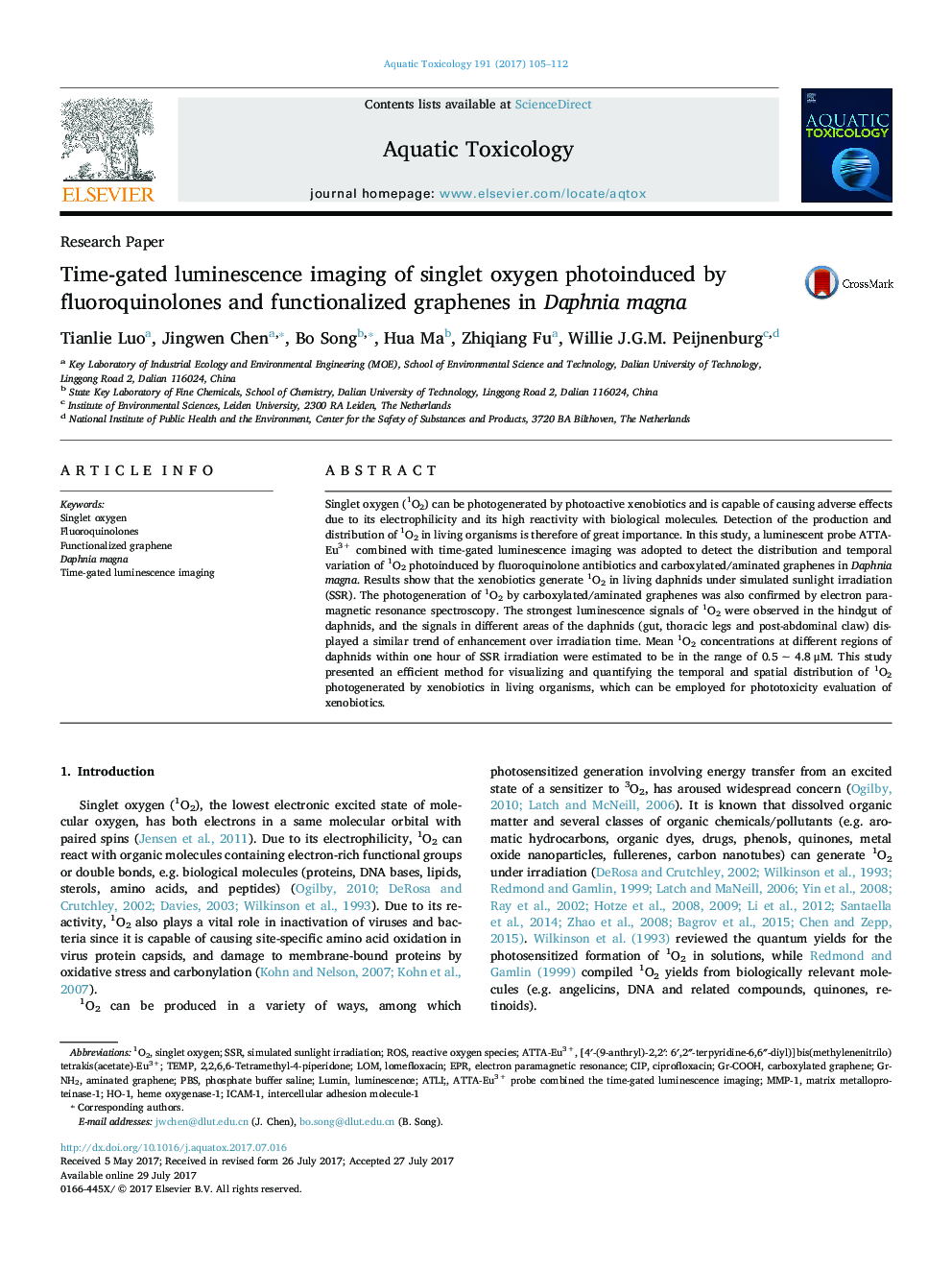| کد مقاله | کد نشریه | سال انتشار | مقاله انگلیسی | نسخه تمام متن |
|---|---|---|---|---|
| 5764100 | 1625914 | 2017 | 8 صفحه PDF | دانلود رایگان |

- 1O2 induced by fluoroquinolones and functionalized graphenes in daphnids was visualized and quantified.
- ATLI technology was developed to indicate the distribution of 1O2 in living daphnids.
- The strongest luminescence signals of 1O2 were observed in the hindgut of daphnids.
- Photogeneration of 1O2 by carboxylated/aminated graphenes was confirmed by EPR.
Singlet oxygen (1O2) can be photogenerated by photoactive xenobiotics and is capable of causing adverse effects due to its electrophilicity and its high reactivity with biological molecules. Detection of the production and distribution of 1O2 in living organisms is therefore of great importance. In this study, a luminescent probe ATTA-Eu3+ combined with time-gated luminescence imaging was adopted to detect the distribution and temporal variation of 1O2 photoinduced by fluoroquinolone antibiotics and carboxylated/aminated graphenes in Daphnia magna. Results show that the xenobiotics generate 1O2 in living daphnids under simulated sunlight irradiation (SSR). The photogeneration of 1O2 by carboxylated/aminated graphenes was also confirmed by electron paramagnetic resonance spectroscopy. The strongest luminescence signals of 1O2 were observed in the hindgut of daphnids, and the signals in different areas of the daphnids (gut, thoracic legs and post-abdominal claw) displayed a similar trend of enhancement over irradiation time. Mean 1O2 concentrations at different regions of daphnids within one hour of SSR irradiation were estimated to be in the range of 0.5 â¼Â 4.8 μM. This study presented an efficient method for visualizing and quantifying the temporal and spatial distribution of 1O2 photogenerated by xenobiotics in living organisms, which can be employed for phototoxicity evaluation of xenobiotics.
135
Journal: Aquatic Toxicology - Volume 191, October 2017, Pages 105-112